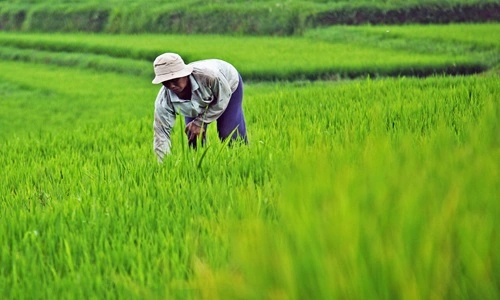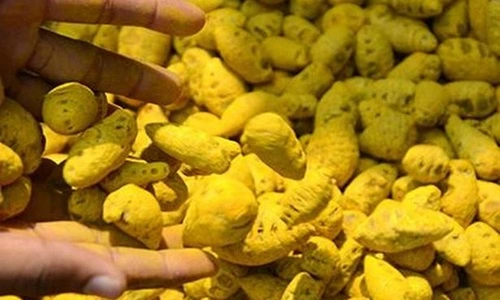India is one of the largest producers and consumers of rice in the world, accounting for nearly 24% of global rice production. Owing to its rich soil diversity and climatic conditions, India cultivates a wide range of rice varieties, catering to both domestic needs and international markets. From aromatic basmati rice to drought-tolerant hybrids, Indian farmers cultivate varieties suited for every region and purpose. This article delves into the most popular rice varieties in India, helping farmers, traders, and consumers understand their unique characteristics.

1. Basmati Rice
Basmati is the pride of Indian rice varieties, renowned for its long grains, exquisite aroma, and delicate flavor. Grown primarily in the northern states such as Punjab, Haryana, and Uttar Pradesh, Basmati is ideal for biryanis and pulaos. Key sub-varieties include Pusa Basmati 1121, Traditional Basmati, and Pusa Basmati 1509.
2. Sona Masuri Rice
Sona Masuri is a medium-grain rice variety that hails from southern India, particularly Andhra Pradesh, Telangana, and Karnataka. Known for its light weight and low starch content, Sona Masuri is perfect for daily consumption, making dishes like steamed rice, idli, and pongal.
3. Ponni Rice
Ponni rice is primarily grown in Tamil Nadu and Karnataka. It is a medium-grain variety rich in carbohydrates and often recommended for diabetic patients due to its low glycemic index. Ponni rice is popular for preparing South Indian meals like sambhar rice and curd rice.
4. IR 64 Rice
IR 64 is one of the most widely cultivated rice varieties in India, particularly in Andhra Pradesh and Chhattisgarh. It is a high-yielding, long-grain rice variety with a soft texture. This rice is often used for mass consumption, exports, and preparation of boiled rice dishes.
5. Gobindobhog Rice
Gobindobhog is a premium short-grain aromatic rice variety native to West Bengal. Known for its buttery aroma and sticky texture, this rice is used for preparing delicacies like khichdi, payasam, and Bengali sweet dishes. It holds a Geographical Indication (GI) tag, highlighting its unique regional importance.
6. Indrayani Rice
Indrayani is a fragrant, short-grain variety cultivated in Maharashtra, particularly in the Pune and Mulshi regions. It is a preferred choice for traditional Maharashtrian dishes and everyday meals due to its sticky texture and sweet aroma.
7. Matta Rice (Palakkadan Matta)
Matta rice, also known as Kerala Red Rice, is famous for its reddish-brown color and high nutritional value. This rice is coarse and has a distinct flavor, often used in Kerala’s traditional meals. Its rich fiber and nutrient content make it a healthy choice for daily consumption.
8. Samba Rice (Seeraga Samba)
Seeraga Samba is a premium short-grain rice grown in Tamil Nadu. It is highly aromatic and known for its delicate texture, making it a favorite for biryanis, especially the Chettinad-style biryani. The name comes from its resemblance to cumin seeds (“seeragam” in Tamil).
9. Joha Rice
Joha rice is a short-grain, aromatic variety native to Assam. It is highly valued for its delicate flavor and rich aroma. Joha rice is used to prepare traditional Assamese sweet dishes, rice-based desserts, and festive meals.
10. Rajamudi Rice
Rajamudi rice is a traditional red rice variety grown in Karnataka. Once reserved for royalty, this nutrient-rich rice is unpolished, offering significant health benefits, including high fiber, vitamins, and minerals. It has a chewy texture and earthy flavor.
11. Black Rice (Chak Hao)
Black rice, or Chak Hao, is a unique rice variety grown in Manipur and parts of northeast India. This rice is high in antioxidants, particularly anthocyanins, giving it its black-purple color. It is ideal for making desserts like puddings and is popular for its health benefits.
12. Jaya Rice
Jaya is a high-yielding medium-grain rice variety popular in Kerala and parts of Tamil Nadu. It is soft, easy to digest, and widely used for making boiled rice and other traditional Indian dishes.
13. Patna Rice
Patna rice, cultivated in Bihar, is a long-grain rice variety known for its non-sticky nature and light texture. It is suitable for making plain rice, pilafs, and rice salads. Historically, Patna rice has been exported globally, earning recognition for its versatility.
14. Swarna Rice
Swarna rice is a high-yielding, short-grain variety predominantly grown in Odisha, West Bengal, and Bihar. Known for its affordability and availability, Swarna rice is often consumed as boiled rice and is widely used in government food distribution programs.
15. Kalanamak Rice
Kalanamak rice, a traditional variety grown in Uttar Pradesh, is a scented rice with historical significance. This short-grain rice boasts a unique aroma and high nutritional value, making it ideal for festive and cultural preparations.
FAQs
Q1: Which is the best rice variety in India for biryani?
A: Basmati rice, especially Pusa Basmati 1121 and Seeraga Samba, is considered the best rice for biryani due to its long grains and aroma.
Q2: Which rice variety is suitable for diabetic patients?
A: Ponni rice and Kerala Matta rice are recommended for diabetics due to their low glycemic index.
Q3: What is the healthiest variety of rice in India?
A: Black rice (Chak Hao), Matta rice, and Rajamudi rice are considered highly nutritious due to their high fiber, antioxidants, and mineral content.
Q4: Which state is famous for Basmati rice cultivation?
A: Basmati rice is primarily grown in Punjab, Haryana, and Uttar Pradesh.
Q5: What is the GI tag, and which rice varieties have it?
A: A Geographical Indication (GI) tag is given to products unique to a region. Gobindobhog, Seeraga Samba, and Chak Hao rice are examples of rice varieties with a GI tag.
Conclusion
India’s diverse rice varieties cater to both regional cuisines and health-conscious consumers. Each variety offers unique benefits, textures, and flavors, making Indian rice a global treasure. Whether it is the fragrant Basmati or the nutrient-rich black rice, there is a variety for every culinary and nutritional need.

